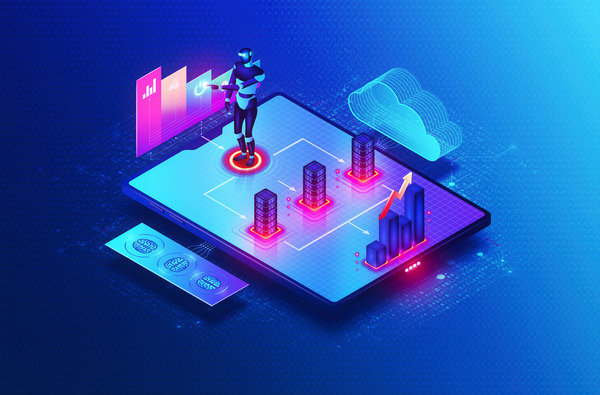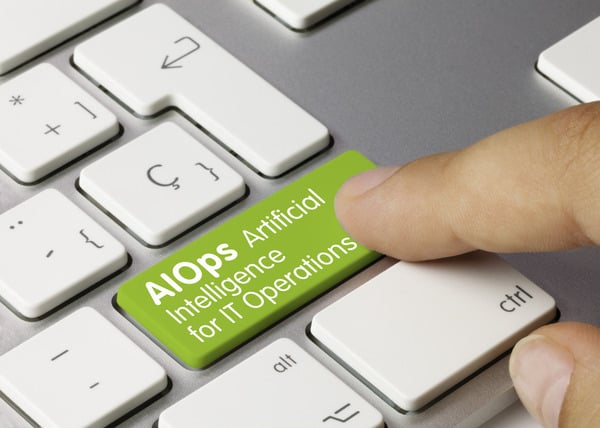
Data Center Battery Technology Explained
April 10, 2024
What Is Data Visibility?
May 9, 2024On this Page:
- What Is AIOps?
- What Are the Core Components of AIOps?
- How Does AIOps Work?
- How Can AIOps Be Implemented?
- What Are the Pros and Cons of AIOps?
- What Does the Growth and Future of AIOps Look Like?
- Conclusion
In the continually evolving world of IT operations, technological advancements are consistently reshaping operational methods and protocols. AIOps, or Artificial Intelligence for IT Operations, looks to be a main part of this transformation by combining AI, big data analytics, and machine learning to enhance and automate IT processes efficiently. This article explores the essential facets of AIOps, providing insight into its transformative impact on optimizing IT operations and fostering innovation and efficiency.
What Is AIOps?
AIOps is where AI, big data analytics, and machine learning come together, focusing primarily on improving and automating IT operations. It aims to streamline the process of identifying and resolving IT problems, which minimizes the manual work required to manage IT infrastructures. This can especially be helpful within complex and continually changing corporate settings.
In the current scenario, companies operate with various sophisticated IT setups, including containers, microservices, and environments spanning multiple clouds. These systems generate an immense amount of data, the complexity and volume of which can be overwhelming and pose challenges for IT teams in pinpointing and resolving issues. AIOps leverage the abundant log and performance data created to oversee assets and provide insight into the connections within and external to IT systems. This can enable the proactive resolution of problems.
This technology is pivotal for companies aiming to navigate the intricate and ever-evolving backdrop of IT and facilitating a more agile and informed approach to managing IT operations.

What Are the Core Components of AIOps?
AIOps is the blend of multiple aspects and advanced technologies, all aimed at enhancing IT operations. It primarily uses a Big Data Platform to gather a wide range of IT operations data from different sources, creating a unified and detailed view that facilitates in-depth analysis and informed decisions.
Machine Learning is crucial in AIOps, functioning as its analytical mind. It processes vast and varied data, identifying vital information amidst irrelevant details and pinpointing main issues while suggesting suitable resolutions. This constant learning adapts to new information and situations, improving its analytical and problem-solving skills progressively.
Analytics in AIOps serves as the intelligent translator, converting unrefined, complex data into practical, usable insights. It’s essential for quickly and accurately identifying and solving problems by transforming raw information into significant interpretations.
Automation in AIOps is the proficient implementer, acting on the insights obtained and reducing the reliance on manual involvement. It not only makes processes more efficient but also enables the system to rectify issues proactively, improving overall effectiveness and responsiveness.
The Integration aspect merges multiple, often isolated, IT operations tools into a cohesive, smart, and automated platform, optimizing workflows and enhancing the speed of response in IT operations management.
By integrating these components, AIOps provides a refined and efficient methodology for managing IT operations. It effectively reduces risks and raises the standard and quality of IT services, setting the stage for developing more sophisticated and dependable IT operation frameworks in the future.

How Does AIOps Work?
AIOps works through a series of connected steps that combine big data and machine learning. It begins with collecting data from different sources like application logs, event data, and performance metrics. This data, whether organized (structured) or not (unstructured), is then analyzed by machine learning algorithms to filter out the real issues from irrelevant noise or incorrect alerts.
After the analysis, AIOps uses inference and performs root cause analysis to find out where the problems are coming from. This is crucial for notifying the right teams and people, allowing for effective collaboration to quickly and efficiently solve the problems that are identified. Finally, AIOps enables automated solutions, which means faster responses to incidents and less manual work is needed.
To put it simply, AIOps simplifies and speeds up the process of identifying and resolving IT operation issues, which makes it easier for IT teams to manage and improve system performance and reliability. By leveraging advanced technologies, it looks to show only the real, relevant issues are addressed. This allows for more proactive and informed decision-making in IT operations.
How Can AIOps Be Implemented?
Integrating artificial intelligence and Implementing AIOps is a pivotal and meticulous process, crucial for enhancing and revolutionizing IT operations in areas like hybrid cloud platforms and process automation. This integration of AI in IT systems automates tasks, analyzes data, and generates insights, transforming IT interactions, problem-solving, and operations. Effective integration requires detailed planning, appropriate AI architecture selection, rigorous development, testing, and continuous evaluation to ensure compatibility and alignment with IT standards. Implementation begins with defining AI use cases and aligning them with IT strategies, considering ethical, legal, and social aspects. Once deployed, continuous monitoring and regular updates are essential to assess performance and maintain alignment with governance standards.
This approach allows for smoother team communication, immediate identification of irregularities, and real-time insights into customer needs and security threats, optimizing multiple IT environment aspects and paving the way for developing more sophisticated IT frameworks. Balancing AIOps capabilities with careful implementation is key to unleashing its full potential in revolutionizing IT operations.

What Are the Pros and Cons of AIOps?
Implementing AIOps can bring different benefits, like saving time and cutting expenses. It provides ongoing, automated monitoring that provides a clearer view of IT operations. This automation helps create agile, flexible, and secure IT systems, which can pave the way for digital transformation and improved teamwork among IT professionals. These benefits are crucial for organizations looking to streamline their operations and enhance their adaptability in a digital landscape.
However, along with the advantages come several drawbacks. Data quality is important, and any issues in this area can hinder the effective use of AIOps. There can also be hurdles in deploying and integrating AIOps solutions into existing systems. An excessive dependence on automation might lead to overlooking important details, and there might be instances of bias and ethical dilemmas, which could pose significant problems. Despite these challenges, the benefits of adopting AIOps are substantial, requiring careful consideration and balanced implementation. Balancing automation with human insight is key to overcoming potential pitfalls and leveraging AIOps to its full potential.
What Does the Growth and Future of AIOps Look Like?
The AIOps market is experiencing rapid growth with several prominent vendors like BMC Software TrueSight, Cisco Crosswork Situation Manager, and more leading the way. Each offers unique solutions to enhance and automate IT operations across various sectors.
This sector’s expansion is notable, with the AIOps market projected to rise from $2.83 billion in 2021 to $19.93 billion by 2028. This growth emphasizes the rising importance of AIOps in modern IT environments and its potential to become a standard in managing the complexities and escalating demands of today’s IT infrastructures.
The ongoing developments and innovations in this field are set to continually improve AIOps solutions, which make them more effective and user-friendly, and solidify their role in the future of IT operations.
Conclusion
AIOps has the potential to be transformative for IT operations. By intelligently integrating machine learning, analytics, and automation, AIOps not only simplifies IT operations but also acts as a facilitator for digital transformation. While it is important to be familiar with the challenges, the benefits of increased efficiency, enhanced visibility, and automated remediations highlight the immense value that AIOps brings to the modern IT landscape. As it continues to be developed, AIOps has the potential to be a staple in IT operations, optimizing processes and facilitating seamless IT functionality across diverse systems in different industries.

